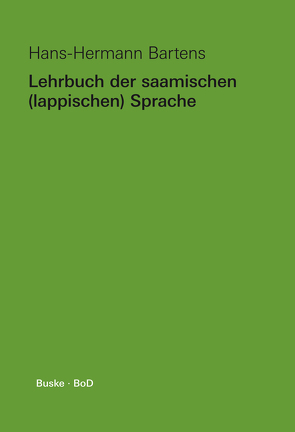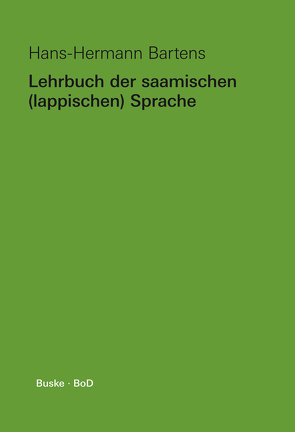
Abstracts
Originalia:
Elizaveta Kotorova (Zielona Góra / Tomsk) – Andrey Nefedov (Hamburg): Besonderheiten des Kommunikationsverhaltens der indigenen sibirischen Völker (am Beispiel des Ketischen)
The peculiarities of communicative behavior within the national culture are determined, on the one hand, by certain linguistic means, and on the other hand, by the rules defining how to use these means. In this article, we identify the following main features of speech behavior patterns implemented by speakers of indigenous languages of Siberia, in particular by the Ket language speakers: 1) Etiquettical speech behavior patterns are implemented in most cases not verbally, but actionally; 2) There are practically no native politeness formulas, instead of them arbitrarily formulated statements or borrowed etiquette clichés are used; 3) Informative speech behavior patterns can be implemented both verbally and actionally; 4) Such communicative and pragmatic factors as age, social status and social distance do not seem to affect the implementation of directive speech behavior patterns.
Miika Lehtinen (Oulu): Skolt Saami passive verbs
This paper deals with the Skolt Saami passive verb suffixes -j- and -õõvvâ- (e.g. mott-j-ed ‘change (intr.)’, rottš-õõvvâ-d ‘be pulled’) cognate with North Saami -o(j)- and -uvva- (e.g. dahkk-o-t ‘be done’, muhttaš-uvva-t ‘change (intr.)’) as well as Finnish -u- ~ -y- (e.g. käänt-y-ä ‘turn (intr)’). The research material has two complementary parts: a dialectal dictionary and a speech corpus. The semantics of the relevant verbs in the material is examined. The main distinction is made between intentional passives (true passives having a volitional agent) and automative passives (actions that happen spontaneously or by accident, anticausatives). The results show that at least the suffix -jed and to a lesser extent -õõvvâd are mainly used to mark automative passives, but some instances of intentional passives are also found as well as some cases that are ambiguous between the two. The suffix -õõvvâd is used in the passive function more rarely than the suffix -jed and it has more functions.
Sándor Maticsák (Debrecen): Die mordwinische Sammlung aus der Orenburg-Expedition von Pallas (1768–1774)
The 1769 transit of the Venus across the Sun was always an important astronomical event, because it made possible for astronomers to calculate the distance between the Sun and the Earth. 151 scientists and scholars travelled to 77 pre-selected spots around the world to observe the transit.
In 1768, the Imperial Academy of St. Petersburg organized five expeditions besides the Venus-observing teams to explore the flora, the fauna, the geological and the meteorological characteristics of far-off territories in Russia. The travellers obtained a large amount of information about the residents, customs, lifestyle and culture of these far-off lands, including some linguistic material as well. They wrote travelogues about their experiences.
The leader of the expedition was Peter Simon Pallas (1741–1811), the renowned Swedish natural scientist, and the subdivisions were led by German, Swedish and Russian scientists and scholars. Between 1768 and 1774, Pallas travelled around the Middle Volga Region, the Orenburg Region, Bashkortostan, Southwest Siberia and finally he reached as far as Buryatia. His travelogue was published in three volumes between 1771 and 1776 titled Reise durch verschiedene Provinzen des Russischen Reichs.
Pallas’s book contains linguistic material from several languages, Mordvin, Khanty, Mansi, Samoyedic, Mari and Udmurt included. Most of the words are animal and plant names and vocabulary related to clothing and religious beliefs. The Mordvin material is made up of 83 words. The first volume of the travelogue contains 34 of these, which are mostly names for pieces of clothing and medicinal herbs. The third volume contains a multi-lingual glossary, 49 Mordvin words (mostly from the basic vocabulary) included.
The present paper analyses these Mordvin words. Earlier literature studied only a few of them. The majority of the words occur for the first time ever in Pallas’s work.
Natalia Pimenova (Moskau): Prähistorische Kontakte der Eskimo-Aleutischen und austronesischen Sprachen: sprachliche Zeugnisse im „altaischen“ und „uralo-sibirischen“ Kontext
The Eskimo-Aleut languages are believed to represent a separate prehistoric migration of people from Asia. The more credible proposals on the external relations and prehistoric contacts of Eskimo-Aleut concern one or more of the language families of northern Eurasia. The two serious genetic hypotheses are ‘Altaic’ and ‘Uralo-Siberian’ or more inclusively ‘Nostratic’ (‘Eurasiatic’). With using a comparative analysis method, this paper provides data for connections between Eskimo-Aleut and Austronesian languages. The comparative word-list consists of comparisons of Proto-Eskimo (PE) or Proto-Eskimo-Aleut (PEA) and Proto-Austronesian (PAN) and Proto-Malayo-Polinesian (PMP) words put together by the author.
The material includes lexical entries that the author believes to be strong evidence for the Austronesian influence on Eskimo and Aleut languages. We can explain the lexical similarities as a result of a prehistoric substratum or convergence of proto-languages (contacts with peripheral prehistoric Austronesian subgroups).
Austronesian and alternate Uralo-Sibirian or Altaic etymologies of Eskimo words are discussed.
Sándor Szeverényi (Szeged): Tense in Nganasan narratives
The main objective of the study is to categorize the use of verb tenses in Nganasan personal narratives. The study is corpus-based, with texts found in the annotated Nganasan Spoken Language Corpus (Brykina et al. 2018). The motivation of the study is to describe the various and complicated system of TAME categories in Nganasan. The analysis proves that a relation of the use of past tense and perfective aorist and their role in the storytelling may be motivated by ethnosyntactic factors. An ethnosyntactic base can be detected behind the use of the aorist – but full-fledged proof of this requires further investigation, into notions such as the “value” of time in the Nganasan culture. It seems that in the use of the aorist the prominence of the present moment and real-time of life is reflected. Labov’s oral narrative structure description is applied to the Nganasan narratives as well. The research focuses on the relation of the beginning and the main parts, i.e. the Abstract/Orientation and Complicating Action. In Nganasan stories, we find sequences: typical beginnings and segments. These are well reflected in the tense of the foreground. A relevant part of the foreground can be the utterances of the characters that belong to the mainline. The two main strategies are the use of past tense and perfective aorist. It means that there are two basic story-telling temporal frames: perfective aorist and general past tense. The first one is more typical in the folklore genres. These two strategies can be combined with narrative/reportative evidentiality. Several aspects play a role in the “choice” of tense, one of the most important being the role of the speaker and their relationship to the story. This is well reflected, for example, between the introductory parts (Abstract and Orientation) and the dominant tense of the main story-line (Complicating action).
Sándor Szeverényi and Beáta Wagner-Nagy: Verbs of speaking in Nganasan: A corpus-based approach
The study aims at categorizing verbs of speaking and thinking in Nganasan. All verbs that can be associated with thinking and speaking are examined in the texts found in the annotated Nganasan Spoken Language Corpus (Brykina et al. 2018). The approach as a whole is rather formal and quantitative, primarily focusing on which verbs are involved in constructing report speech. It can be shown that in the Nganasan texts, several verbs express utterances, but according to their number of occurrences, munu- ‘say’ is the most common and most frequently used verb of speaking. According to the distribution in the corpus data, it seems that the overall number of verb-of-speaking is not high.
Aktualisiert: 2023-06-16
> findR *
Dieses Lehrbuch dient der Aneignung der norwegisch-saamischen Schriftsprache in der Orthographie von 1979 und ist für Lernende ohne Vorkenntnisse konzipiert.
In der Einführung werden wichtige Aspekte der Phonetik, Phonologie und Morphonologie beschrieben. Die 27 Lektionen bestehen aus jeweils fünf Teilen: Lesestück (A) und Vokabelteil (B), Grammatik (C), Übungen (D) und Zusammenfassung (E). Im Anhang finden sich Paralleltexte in verschiedenen Schreibweisen, so daß insbesondere auch die in der finno-ugrischen Sprachwissenschaft verwendete Nielsensche Orthographie vermittelt wird. Der Schlüssel zu den Übungen, ein zweisprachiges Wörterverzeichnis und Flexionstabellen runden das Werk ab.
Aktualisiert: 2023-06-16
> findR *

Abstracts
Originalia:
Elizaveta Kotorova (Zielona Góra / Tomsk) – Andrey Nefedov (Hamburg): Besonderheiten des Kommunikationsverhaltens der indigenen sibirischen Völker (am Beispiel des Ketischen)
The peculiarities of communicative behavior within the national culture are determined, on the one hand, by certain linguistic means, and on the other hand, by the rules defining how to use these means. In this article, we identify the following main features of speech behavior patterns implemented by speakers of indigenous languages of Siberia, in particular by the Ket language speakers: 1) Etiquettical speech behavior patterns are implemented in most cases not verbally, but actionally; 2) There are practically no native politeness formulas, instead of them arbitrarily formulated statements or borrowed etiquette clichés are used; 3) Informative speech behavior patterns can be implemented both verbally and actionally; 4) Such communicative and pragmatic factors as age, social status and social distance do not seem to affect the implementation of directive speech behavior patterns.
Miika Lehtinen (Oulu): Skolt Saami passive verbs
This paper deals with the Skolt Saami passive verb suffixes -j- and -õõvvâ- (e.g. mott-j-ed ‘change (intr.)’, rottš-õõvvâ-d ‘be pulled’) cognate with North Saami -o(j)- and -uvva- (e.g. dahkk-o-t ‘be done’, muhttaš-uvva-t ‘change (intr.)’) as well as Finnish -u- ~ -y- (e.g. käänt-y-ä ‘turn (intr)’). The research material has two complementary parts: a dialectal dictionary and a speech corpus. The semantics of the relevant verbs in the material is examined. The main distinction is made between intentional passives (true passives having a volitional agent) and automative passives (actions that happen spontaneously or by accident, anticausatives). The results show that at least the suffix -jed and to a lesser extent -õõvvâd are mainly used to mark automative passives, but some instances of intentional passives are also found as well as some cases that are ambiguous between the two. The suffix -õõvvâd is used in the passive function more rarely than the suffix -jed and it has more functions.
Sándor Maticsák (Debrecen): Die mordwinische Sammlung aus der Orenburg-Expedition von Pallas (1768–1774)
The 1769 transit of the Venus across the Sun was always an important astronomical event, because it made possible for astronomers to calculate the distance between the Sun and the Earth. 151 scientists and scholars travelled to 77 pre-selected spots around the world to observe the transit.
In 1768, the Imperial Academy of St. Petersburg organized five expeditions besides the Venus-observing teams to explore the flora, the fauna, the geological and the meteorological characteristics of far-off territories in Russia. The travellers obtained a large amount of information about the residents, customs, lifestyle and culture of these far-off lands, including some linguistic material as well. They wrote travelogues about their experiences.
The leader of the expedition was Peter Simon Pallas (1741–1811), the renowned Swedish natural scientist, and the subdivisions were led by German, Swedish and Russian scientists and scholars. Between 1768 and 1774, Pallas travelled around the Middle Volga Region, the Orenburg Region, Bashkortostan, Southwest Siberia and finally he reached as far as Buryatia. His travelogue was published in three volumes between 1771 and 1776 titled Reise durch verschiedene Provinzen des Russischen Reichs.
Pallas’s book contains linguistic material from several languages, Mordvin, Khanty, Mansi, Samoyedic, Mari and Udmurt included. Most of the words are animal and plant names and vocabulary related to clothing and religious beliefs. The Mordvin material is made up of 83 words. The first volume of the travelogue contains 34 of these, which are mostly names for pieces of clothing and medicinal herbs. The third volume contains a multi-lingual glossary, 49 Mordvin words (mostly from the basic vocabulary) included.
The present paper analyses these Mordvin words. Earlier literature studied only a few of them. The majority of the words occur for the first time ever in Pallas’s work.
Natalia Pimenova (Moskau): Prähistorische Kontakte der Eskimo-Aleutischen und austronesischen Sprachen: sprachliche Zeugnisse im „altaischen“ und „uralo-sibirischen“ Kontext
The Eskimo-Aleut languages are believed to represent a separate prehistoric migration of people from Asia. The more credible proposals on the external relations and prehistoric contacts of Eskimo-Aleut concern one or more of the language families of northern Eurasia. The two serious genetic hypotheses are ‘Altaic’ and ‘Uralo-Siberian’ or more inclusively ‘Nostratic’ (‘Eurasiatic’). With using a comparative analysis method, this paper provides data for connections between Eskimo-Aleut and Austronesian languages. The comparative word-list consists of comparisons of Proto-Eskimo (PE) or Proto-Eskimo-Aleut (PEA) and Proto-Austronesian (PAN) and Proto-Malayo-Polinesian (PMP) words put together by the author.
The material includes lexical entries that the author believes to be strong evidence for the Austronesian influence on Eskimo and Aleut languages. We can explain the lexical similarities as a result of a prehistoric substratum or convergence of proto-languages (contacts with peripheral prehistoric Austronesian subgroups).
Austronesian and alternate Uralo-Sibirian or Altaic etymologies of Eskimo words are discussed.
Sándor Szeverényi (Szeged): Tense in Nganasan narratives
The main objective of the study is to categorize the use of verb tenses in Nganasan personal narratives. The study is corpus-based, with texts found in the annotated Nganasan Spoken Language Corpus (Brykina et al. 2018). The motivation of the study is to describe the various and complicated system of TAME categories in Nganasan. The analysis proves that a relation of the use of past tense and perfective aorist and their role in the storytelling may be motivated by ethnosyntactic factors. An ethnosyntactic base can be detected behind the use of the aorist – but full-fledged proof of this requires further investigation, into notions such as the “value” of time in the Nganasan culture. It seems that in the use of the aorist the prominence of the present moment and real-time of life is reflected. Labov’s oral narrative structure description is applied to the Nganasan narratives as well. The research focuses on the relation of the beginning and the main parts, i.e. the Abstract/Orientation and Complicating Action. In Nganasan stories, we find sequences: typical beginnings and segments. These are well reflected in the tense of the foreground. A relevant part of the foreground can be the utterances of the characters that belong to the mainline. The two main strategies are the use of past tense and perfective aorist. It means that there are two basic story-telling temporal frames: perfective aorist and general past tense. The first one is more typical in the folklore genres. These two strategies can be combined with narrative/reportative evidentiality. Several aspects play a role in the “choice” of tense, one of the most important being the role of the speaker and their relationship to the story. This is well reflected, for example, between the introductory parts (Abstract and Orientation) and the dominant tense of the main story-line (Complicating action).
Sándor Szeverényi and Beáta Wagner-Nagy: Verbs of speaking in Nganasan: A corpus-based approach
The study aims at categorizing verbs of speaking and thinking in Nganasan. All verbs that can be associated with thinking and speaking are examined in the texts found in the annotated Nganasan Spoken Language Corpus (Brykina et al. 2018). The approach as a whole is rather formal and quantitative, primarily focusing on which verbs are involved in constructing report speech. It can be shown that in the Nganasan texts, several verbs express utterances, but according to their number of occurrences, munu- ‘say’ is the most common and most frequently used verb of speaking. According to the distribution in the corpus data, it seems that the overall number of verb-of-speaking is not high.
Aktualisiert: 2023-06-16
> findR *

Abstracts
Originalia:
Josefina Budzisch – Ulrike Kahrs (Hamburg): Cardinal directions in Selkup
The paper deals with the denotations of the main cardinal points in Selkup, taking all three main dialect groups (Northern, Central and Southern) into account. The naming of cardinal points is not well studied for Selkup, there is a lack of analysis of the underlying semantic structure of the denominations – this study aims at closing that research gap and giving some insights in environmental and cultural factors playing a role in expressing cardinal points. The paper has the following structure: after a brief introduction, the current state of research is presented as well as the data used in the study, the main section deals with the analysis of the underlying structures in denoting south/north and east/west. The findings are summarized in the final section.
Sándor Szeverényi – Katalin Sipőcz (Szeged): Formen der direkten und indirekten Redewiedergabe im Nganasanischen und im Mansischen
In this paper we examine reported speech constructions in two Uralic languages spoken in Siberia, Nganasan and Mansi. We also examine whether areal - primarily Russian - influence can be found in these structures. Indirect speech report with person shift are rare in the languages studied, but sporadic data can be found in the corpus for this type, too. In Mansi and Nganasan the direct reported speech structure is much more common than indirect. It can be observed that in languages the direct speech structure consisting of two clauses requires a complementizer resulting subordinating clauses. Such complementizers do not exis in these languages, although there are examples in our corpus for the adaption of the Russian conjunction što ‘that’. In Mansi, in addition to the direct structure we can find indirect type without conjunction, and non-finit structure can be used, too. In Nganasan the reportative evidential serves as an alternative strategy.
Denys Teptiuk (Tartu): Quotative indexes in Erzya: a typological overview
In this paper, I provide a typological overview of quotative indexes, i.e. linguistic expression(s) encoding the presence of reported speech and thought, in contemporary Erzya. I focus on quotative strategies of different complexity attested in social media texts and classify the constructions according to their morphosyntactic structure and orientation. Furthermore, I take into account the possible connotations arising in the use of concrete strategies, such as the precision of reported discourse vis-à-vis original discourse, the reporter’s evaluative connotations concerning reported information and ambiguity in the presentation of speech and thought. The results of this study show that the markers used in Erzya quotative indexes correspond to their uses in other related languages and reflect cross-linguistic tendencies in the use of semantically reportative and non-reportative markers in quotative constructions.
Enikő Tóth – Péter Csatár (Debrecen): A comparison of Hungarian focus structures: experimental insights
Our paper reports the results of an experiment we conducted to compare Hungarian preverbal focus (PVF) and syntactically unmarked focus (SUF) within the same experimental framework. The aim of the experiment was twofold: (i) to examine whether native speakers give higher ratings for PVF/SUF constructions in exhaustive settings than in non-exhaustive ones, (ii) to test whether the mode of presentation (written vs. auditory clues, no introductory question vs. the presence of an introductory wh-question) influences the ratings. We used a sentence-picture verification task in a relatively rich context. We found no empirical difference between PFV and SUF across the conditions, i.e. SUF might also receive an exhaustive interpretation (Surányi 2011). The results regarding the role of the wh-question are in line with Onea and Beaver’s work (2011) on PVF. Our findings support the assumption that for both structures exhaustiveness can be explained by the presence of a not necessarily explicit introductory wh-question, namely, a contextually derivable implicit question under discussion also facilitates the exhaustive interpretation.
Diskussion und Kritik:
Volker Pirsich (Hrsg.): Die Nadelwälder dunkeln fort im Osten. Deutschsprachige Gedichte über Finnland und die Finnen. Grevenbroich: Heiner Labonde Verlag 2019. 167 S. (Veröffentlichungen der Aue-Stiftung, 42).
Jukka Korpela: Slaves from the North. Finns and Karelians in the East European Slave Trade, 900 – 1600. Leiden, Boston: Brill 2019. 306 S. (Studies in Global Slavery, Volume 5).
Musäus, Thekla: Wasser, Wälder und graue Dörfer. Karelien in der finnischen und sowjetischen Literatur 1931‒1957. Wiesbaden: Harrassowitz Verlag 2019. VSUA 92. Inaugural-Dissertation zur Erlangung des Doktorgrades der Philosophie an der Universität Greifswald. 449 Seiten.
Berichte, Mitteilungen, Nachrichten:
Paul Kokla 17.8.1929 – 16.5.2020
Digitale Edition des Kuzmina Archivs
Aktualisiert: 2023-06-16
> findR *

Josefina Budzisch – Ulrike Kahrs (Hamburg): Cardinal directions in Selkup
The paper deals with the denotations of the main cardinal points in Selkup, taking all three main dialect groups (Northern, Central and Southern) into account. The naming of cardinal points is not well studied for Selkup, there is a lack of analysis of the underlying semantic structure of the denominations – this study aims at closing that research gap and giving some insights in environmental and cultural factors playing a role in expressing cardinal points. The paper has the following structure: after a brief introduction, the current state of research is presented as well as the data used in the study, the main section deals with the analysis of the underlying structures in denoting south/north and east/west. The findings are summarized in the final section.
Sándor Szeverényi – Katalin Sipőcz (Szeged): Formen der direkten und indirekten Redewiedergabe im Nganasanischen und im Mansischen
In this paper we examine reported speech constructions in two Uralic languages spoken in Siberia, Nganasan and Mansi. We also examine whether areal - primarily Russian - influence can be found in these structures. Indirect speech report with person shift are rare in the languages studied, but sporadic data can be found in the corpus for this type, too. In Mansi and Nganasan the direct reported speech structure is much more common than indirect. It can be observed that in languages the direct speech structure consisting of two clauses requires a complementizer resulting subordinating clauses. Such complementizers do not exis in these languages, although there are examples in our corpus for the adaption of the Russian conjunction što 'that'. In Mansi, in addition to the direct structure we can find indirect type without conjunction, and non-finit structure can be used, too. In Nganasan the reportative evidential serves as an alternative strategy.
Denys Teptiuk (Tartu): Quotative indexes in Erzya: a typological overview
In this paper, I provide a typological overview of quotative indexes, i.e. linguistic expression(s) encoding the presence of reported speech and thought, in contemporary Erzya. I focus on quotative strategies of different complexity attested in social media texts and classify the constructions according to their morphosyntactic structure and orientation. Furthermore, I take into account the possible connotations arising in the use of concrete strategies, such as the precision of reported discourse vis-à-vis original discourse, the reporter's evaluative connotations concerning reported information and ambiguity in the presentation of speech and thought. The results of this study show that the markers used in Erzya quotative indexes correspond to their uses in other related languages and reflect cross-linguistic tendencies in the use of semantically reportative and non-reportative markers in quotative constructions.
Aktualisiert: 2023-06-16
> findR *

Abstracts
Originalia:
Elizaveta Kotorova (Zielona Góra / Tomsk) – Andrey Nefedov (Hamburg): Besonderheiten des Kommunikationsverhaltens der indigenen sibirischen Völker (am Beispiel des Ketischen)
The peculiarities of communicative behavior within the national culture are determined, on the one hand, by certain linguistic means, and on the other hand, by the rules defining how to use these means. In this article, we identify the following main features of speech behavior patterns implemented by speakers of indigenous languages of Siberia, in particular by the Ket language speakers: 1) Etiquettical speech behavior patterns are implemented in most cases not verbally, but actionally; 2) There are practically no native politeness formulas, instead of them arbitrarily formulated statements or borrowed etiquette clichés are used; 3) Informative speech behavior patterns can be implemented both verbally and actionally; 4) Such communicative and pragmatic factors as age, social status and social distance do not seem to affect the implementation of directive speech behavior patterns.
Miika Lehtinen (Oulu): Skolt Saami passive verbs
This paper deals with the Skolt Saami passive verb suffixes -j- and -õõvvâ- (e.g. mott-j-ed ‘change (intr.)’, rottš-õõvvâ-d ‘be pulled’) cognate with North Saami -o(j)- and -uvva- (e.g. dahkk-o-t ‘be done’, muhttaš-uvva-t ‘change (intr.)’) as well as Finnish -u- ~ -y- (e.g. käänt-y-ä ‘turn (intr)’). The research material has two complementary parts: a dialectal dictionary and a speech corpus. The semantics of the relevant verbs in the material is examined. The main distinction is made between intentional passives (true passives having a volitional agent) and automative passives (actions that happen spontaneously or by accident, anticausatives). The results show that at least the suffix -jed and to a lesser extent -õõvvâd are mainly used to mark automative passives, but some instances of intentional passives are also found as well as some cases that are ambiguous between the two. The suffix -õõvvâd is used in the passive function more rarely than the suffix -jed and it has more functions.
Sándor Maticsák (Debrecen): Die mordwinische Sammlung aus der Orenburg-Expedition von Pallas (1768–1774)
The 1769 transit of the Venus across the Sun was always an important astronomical event, because it made possible for astronomers to calculate the distance between the Sun and the Earth. 151 scientists and scholars travelled to 77 pre-selected spots around the world to observe the transit.
In 1768, the Imperial Academy of St. Petersburg organized five expeditions besides the Venus-observing teams to explore the flora, the fauna, the geological and the meteorological characteristics of far-off territories in Russia. The travellers obtained a large amount of information about the residents, customs, lifestyle and culture of these far-off lands, including some linguistic material as well. They wrote travelogues about their experiences.
The leader of the expedition was Peter Simon Pallas (1741–1811), the renowned Swedish natural scientist, and the subdivisions were led by German, Swedish and Russian scientists and scholars. Between 1768 and 1774, Pallas travelled around the Middle Volga Region, the Orenburg Region, Bashkortostan, Southwest Siberia and finally he reached as far as Buryatia. His travelogue was published in three volumes between 1771 and 1776 titled Reise durch verschiedene Provinzen des Russischen Reichs.
Pallas’s book contains linguistic material from several languages, Mordvin, Khanty, Mansi, Samoyedic, Mari and Udmurt included. Most of the words are animal and plant names and vocabulary related to clothing and religious beliefs. The Mordvin material is made up of 83 words. The first volume of the travelogue contains 34 of these, which are mostly names for pieces of clothing and medicinal herbs. The third volume contains a multi-lingual glossary, 49 Mordvin words (mostly from the basic vocabulary) included.
The present paper analyses these Mordvin words. Earlier literature studied only a few of them. The majority of the words occur for the first time ever in Pallas’s work.
Natalia Pimenova (Moskau): Prähistorische Kontakte der Eskimo-Aleutischen und austronesischen Sprachen: sprachliche Zeugnisse im „altaischen“ und „uralo-sibirischen“ Kontext
The Eskimo-Aleut languages are believed to represent a separate prehistoric migration of people from Asia. The more credible proposals on the external relations and prehistoric contacts of Eskimo-Aleut concern one or more of the language families of northern Eurasia. The two serious genetic hypotheses are ‘Altaic’ and ‘Uralo-Siberian’ or more inclusively ‘Nostratic’ (‘Eurasiatic’). With using a comparative analysis method, this paper provides data for connections between Eskimo-Aleut and Austronesian languages. The comparative word-list consists of comparisons of Proto-Eskimo (PE) or Proto-Eskimo-Aleut (PEA) and Proto-Austronesian (PAN) and Proto-Malayo-Polinesian (PMP) words put together by the author.
The material includes lexical entries that the author believes to be strong evidence for the Austronesian influence on Eskimo and Aleut languages. We can explain the lexical similarities as a result of a prehistoric substratum or convergence of proto-languages (contacts with peripheral prehistoric Austronesian subgroups).
Austronesian and alternate Uralo-Sibirian or Altaic etymologies of Eskimo words are discussed.
Sándor Szeverényi (Szeged): Tense in Nganasan narratives
The main objective of the study is to categorize the use of verb tenses in Nganasan personal narratives. The study is corpus-based, with texts found in the annotated Nganasan Spoken Language Corpus (Brykina et al. 2018). The motivation of the study is to describe the various and complicated system of TAME categories in Nganasan. The analysis proves that a relation of the use of past tense and perfective aorist and their role in the storytelling may be motivated by ethnosyntactic factors. An ethnosyntactic base can be detected behind the use of the aorist – but full-fledged proof of this requires further investigation, into notions such as the “value” of time in the Nganasan culture. It seems that in the use of the aorist the prominence of the present moment and real-time of life is reflected. Labov’s oral narrative structure description is applied to the Nganasan narratives as well. The research focuses on the relation of the beginning and the main parts, i.e. the Abstract/Orientation and Complicating Action. In Nganasan stories, we find sequences: typical beginnings and segments. These are well reflected in the tense of the foreground. A relevant part of the foreground can be the utterances of the characters that belong to the mainline. The two main strategies are the use of past tense and perfective aorist. It means that there are two basic story-telling temporal frames: perfective aorist and general past tense. The first one is more typical in the folklore genres. These two strategies can be combined with narrative/reportative evidentiality. Several aspects play a role in the “choice” of tense, one of the most important being the role of the speaker and their relationship to the story. This is well reflected, for example, between the introductory parts (Abstract and Orientation) and the dominant tense of the main story-line (Complicating action).
Sándor Szeverényi and Beáta Wagner-Nagy: Verbs of speaking in Nganasan: A corpus-based approach
The study aims at categorizing verbs of speaking and thinking in Nganasan. All verbs that can be associated with thinking and speaking are examined in the texts found in the annotated Nganasan Spoken Language Corpus (Brykina et al. 2018). The approach as a whole is rather formal and quantitative, primarily focusing on which verbs are involved in constructing report speech. It can be shown that in the Nganasan texts, several verbs express utterances, but according to their number of occurrences, munu- ‘say’ is the most common and most frequently used verb of speaking. According to the distribution in the corpus data, it seems that the overall number of verb-of-speaking is not high.
Aktualisiert: 2023-06-13
> findR *

Abstracts
Originalia:
Elizaveta Kotorova (Zielona Góra / Tomsk) – Andrey Nefedov (Hamburg): Besonderheiten des Kommunikationsverhaltens der indigenen sibirischen Völker (am Beispiel des Ketischen)
The peculiarities of communicative behavior within the national culture are determined, on the one hand, by certain linguistic means, and on the other hand, by the rules defining how to use these means. In this article, we identify the following main features of speech behavior patterns implemented by speakers of indigenous languages of Siberia, in particular by the Ket language speakers: 1) Etiquettical speech behavior patterns are implemented in most cases not verbally, but actionally; 2) There are practically no native politeness formulas, instead of them arbitrarily formulated statements or borrowed etiquette clichés are used; 3) Informative speech behavior patterns can be implemented both verbally and actionally; 4) Such communicative and pragmatic factors as age, social status and social distance do not seem to affect the implementation of directive speech behavior patterns.
Miika Lehtinen (Oulu): Skolt Saami passive verbs
This paper deals with the Skolt Saami passive verb suffixes -j- and -õõvvâ- (e.g. mott-j-ed ‘change (intr.)’, rottš-õõvvâ-d ‘be pulled’) cognate with North Saami -o(j)- and -uvva- (e.g. dahkk-o-t ‘be done’, muhttaš-uvva-t ‘change (intr.)’) as well as Finnish -u- ~ -y- (e.g. käänt-y-ä ‘turn (intr)’). The research material has two complementary parts: a dialectal dictionary and a speech corpus. The semantics of the relevant verbs in the material is examined. The main distinction is made between intentional passives (true passives having a volitional agent) and automative passives (actions that happen spontaneously or by accident, anticausatives). The results show that at least the suffix -jed and to a lesser extent -õõvvâd are mainly used to mark automative passives, but some instances of intentional passives are also found as well as some cases that are ambiguous between the two. The suffix -õõvvâd is used in the passive function more rarely than the suffix -jed and it has more functions.
Sándor Maticsák (Debrecen): Die mordwinische Sammlung aus der Orenburg-Expedition von Pallas (1768–1774)
The 1769 transit of the Venus across the Sun was always an important astronomical event, because it made possible for astronomers to calculate the distance between the Sun and the Earth. 151 scientists and scholars travelled to 77 pre-selected spots around the world to observe the transit.
In 1768, the Imperial Academy of St. Petersburg organized five expeditions besides the Venus-observing teams to explore the flora, the fauna, the geological and the meteorological characteristics of far-off territories in Russia. The travellers obtained a large amount of information about the residents, customs, lifestyle and culture of these far-off lands, including some linguistic material as well. They wrote travelogues about their experiences.
The leader of the expedition was Peter Simon Pallas (1741–1811), the renowned Swedish natural scientist, and the subdivisions were led by German, Swedish and Russian scientists and scholars. Between 1768 and 1774, Pallas travelled around the Middle Volga Region, the Orenburg Region, Bashkortostan, Southwest Siberia and finally he reached as far as Buryatia. His travelogue was published in three volumes between 1771 and 1776 titled Reise durch verschiedene Provinzen des Russischen Reichs.
Pallas’s book contains linguistic material from several languages, Mordvin, Khanty, Mansi, Samoyedic, Mari and Udmurt included. Most of the words are animal and plant names and vocabulary related to clothing and religious beliefs. The Mordvin material is made up of 83 words. The first volume of the travelogue contains 34 of these, which are mostly names for pieces of clothing and medicinal herbs. The third volume contains a multi-lingual glossary, 49 Mordvin words (mostly from the basic vocabulary) included.
The present paper analyses these Mordvin words. Earlier literature studied only a few of them. The majority of the words occur for the first time ever in Pallas’s work.
Natalia Pimenova (Moskau): Prähistorische Kontakte der Eskimo-Aleutischen und austronesischen Sprachen: sprachliche Zeugnisse im „altaischen“ und „uralo-sibirischen“ Kontext
The Eskimo-Aleut languages are believed to represent a separate prehistoric migration of people from Asia. The more credible proposals on the external relations and prehistoric contacts of Eskimo-Aleut concern one or more of the language families of northern Eurasia. The two serious genetic hypotheses are ‘Altaic’ and ‘Uralo-Siberian’ or more inclusively ‘Nostratic’ (‘Eurasiatic’). With using a comparative analysis method, this paper provides data for connections between Eskimo-Aleut and Austronesian languages. The comparative word-list consists of comparisons of Proto-Eskimo (PE) or Proto-Eskimo-Aleut (PEA) and Proto-Austronesian (PAN) and Proto-Malayo-Polinesian (PMP) words put together by the author.
The material includes lexical entries that the author believes to be strong evidence for the Austronesian influence on Eskimo and Aleut languages. We can explain the lexical similarities as a result of a prehistoric substratum or convergence of proto-languages (contacts with peripheral prehistoric Austronesian subgroups).
Austronesian and alternate Uralo-Sibirian or Altaic etymologies of Eskimo words are discussed.
Sándor Szeverényi (Szeged): Tense in Nganasan narratives
The main objective of the study is to categorize the use of verb tenses in Nganasan personal narratives. The study is corpus-based, with texts found in the annotated Nganasan Spoken Language Corpus (Brykina et al. 2018). The motivation of the study is to describe the various and complicated system of TAME categories in Nganasan. The analysis proves that a relation of the use of past tense and perfective aorist and their role in the storytelling may be motivated by ethnosyntactic factors. An ethnosyntactic base can be detected behind the use of the aorist – but full-fledged proof of this requires further investigation, into notions such as the “value” of time in the Nganasan culture. It seems that in the use of the aorist the prominence of the present moment and real-time of life is reflected. Labov’s oral narrative structure description is applied to the Nganasan narratives as well. The research focuses on the relation of the beginning and the main parts, i.e. the Abstract/Orientation and Complicating Action. In Nganasan stories, we find sequences: typical beginnings and segments. These are well reflected in the tense of the foreground. A relevant part of the foreground can be the utterances of the characters that belong to the mainline. The two main strategies are the use of past tense and perfective aorist. It means that there are two basic story-telling temporal frames: perfective aorist and general past tense. The first one is more typical in the folklore genres. These two strategies can be combined with narrative/reportative evidentiality. Several aspects play a role in the “choice” of tense, one of the most important being the role of the speaker and their relationship to the story. This is well reflected, for example, between the introductory parts (Abstract and Orientation) and the dominant tense of the main story-line (Complicating action).
Sándor Szeverényi and Beáta Wagner-Nagy: Verbs of speaking in Nganasan: A corpus-based approach
The study aims at categorizing verbs of speaking and thinking in Nganasan. All verbs that can be associated with thinking and speaking are examined in the texts found in the annotated Nganasan Spoken Language Corpus (Brykina et al. 2018). The approach as a whole is rather formal and quantitative, primarily focusing on which verbs are involved in constructing report speech. It can be shown that in the Nganasan texts, several verbs express utterances, but according to their number of occurrences, munu- ‘say’ is the most common and most frequently used verb of speaking. According to the distribution in the corpus data, it seems that the overall number of verb-of-speaking is not high.
Aktualisiert: 2023-06-13
> findR *

Abstracts
Originalia:
Josefina Budzisch – Ulrike Kahrs (Hamburg): Cardinal directions in Selkup
The paper deals with the denotations of the main cardinal points in Selkup, taking all three main dialect groups (Northern, Central and Southern) into account. The naming of cardinal points is not well studied for Selkup, there is a lack of analysis of the underlying semantic structure of the denominations – this study aims at closing that research gap and giving some insights in environmental and cultural factors playing a role in expressing cardinal points. The paper has the following structure: after a brief introduction, the current state of research is presented as well as the data used in the study, the main section deals with the analysis of the underlying structures in denoting south/north and east/west. The findings are summarized in the final section.
Sándor Szeverényi – Katalin Sipőcz (Szeged): Formen der direkten und indirekten Redewiedergabe im Nganasanischen und im Mansischen
In this paper we examine reported speech constructions in two Uralic languages spoken in Siberia, Nganasan and Mansi. We also examine whether areal - primarily Russian - influence can be found in these structures. Indirect speech report with person shift are rare in the languages studied, but sporadic data can be found in the corpus for this type, too. In Mansi and Nganasan the direct reported speech structure is much more common than indirect. It can be observed that in languages the direct speech structure consisting of two clauses requires a complementizer resulting subordinating clauses. Such complementizers do not exis in these languages, although there are examples in our corpus for the adaption of the Russian conjunction što ‘that’. In Mansi, in addition to the direct structure we can find indirect type without conjunction, and non-finit structure can be used, too. In Nganasan the reportative evidential serves as an alternative strategy.
Denys Teptiuk (Tartu): Quotative indexes in Erzya: a typological overview
In this paper, I provide a typological overview of quotative indexes, i.e. linguistic expression(s) encoding the presence of reported speech and thought, in contemporary Erzya. I focus on quotative strategies of different complexity attested in social media texts and classify the constructions according to their morphosyntactic structure and orientation. Furthermore, I take into account the possible connotations arising in the use of concrete strategies, such as the precision of reported discourse vis-à-vis original discourse, the reporter’s evaluative connotations concerning reported information and ambiguity in the presentation of speech and thought. The results of this study show that the markers used in Erzya quotative indexes correspond to their uses in other related languages and reflect cross-linguistic tendencies in the use of semantically reportative and non-reportative markers in quotative constructions.
Enikő Tóth – Péter Csatár (Debrecen): A comparison of Hungarian focus structures: experimental insights
Our paper reports the results of an experiment we conducted to compare Hungarian preverbal focus (PVF) and syntactically unmarked focus (SUF) within the same experimental framework. The aim of the experiment was twofold: (i) to examine whether native speakers give higher ratings for PVF/SUF constructions in exhaustive settings than in non-exhaustive ones, (ii) to test whether the mode of presentation (written vs. auditory clues, no introductory question vs. the presence of an introductory wh-question) influences the ratings. We used a sentence-picture verification task in a relatively rich context. We found no empirical difference between PFV and SUF across the conditions, i.e. SUF might also receive an exhaustive interpretation (Surányi 2011). The results regarding the role of the wh-question are in line with Onea and Beaver’s work (2011) on PVF. Our findings support the assumption that for both structures exhaustiveness can be explained by the presence of a not necessarily explicit introductory wh-question, namely, a contextually derivable implicit question under discussion also facilitates the exhaustive interpretation.
Diskussion und Kritik:
Volker Pirsich (Hrsg.): Die Nadelwälder dunkeln fort im Osten. Deutschsprachige Gedichte über Finnland und die Finnen. Grevenbroich: Heiner Labonde Verlag 2019. 167 S. (Veröffentlichungen der Aue-Stiftung, 42).
Jukka Korpela: Slaves from the North. Finns and Karelians in the East European Slave Trade, 900 – 1600. Leiden, Boston: Brill 2019. 306 S. (Studies in Global Slavery, Volume 5).
Musäus, Thekla: Wasser, Wälder und graue Dörfer. Karelien in der finnischen und sowjetischen Literatur 1931‒1957. Wiesbaden: Harrassowitz Verlag 2019. VSUA 92. Inaugural-Dissertation zur Erlangung des Doktorgrades der Philosophie an der Universität Greifswald. 449 Seiten.
Berichte, Mitteilungen, Nachrichten:
Paul Kokla 17.8.1929 – 16.5.2020
Digitale Edition des Kuzmina Archivs
Aktualisiert: 2023-06-13
> findR *

Josefina Budzisch – Ulrike Kahrs (Hamburg): Cardinal directions in Selkup
The paper deals with the denotations of the main cardinal points in Selkup, taking all three main dialect groups (Northern, Central and Southern) into account. The naming of cardinal points is not well studied for Selkup, there is a lack of analysis of the underlying semantic structure of the denominations – this study aims at closing that research gap and giving some insights in environmental and cultural factors playing a role in expressing cardinal points. The paper has the following structure: after a brief introduction, the current state of research is presented as well as the data used in the study, the main section deals with the analysis of the underlying structures in denoting south/north and east/west. The findings are summarized in the final section.
Sándor Szeverényi – Katalin Sipőcz (Szeged): Formen der direkten und indirekten Redewiedergabe im Nganasanischen und im Mansischen
In this paper we examine reported speech constructions in two Uralic languages spoken in Siberia, Nganasan and Mansi. We also examine whether areal - primarily Russian - influence can be found in these structures. Indirect speech report with person shift are rare in the languages studied, but sporadic data can be found in the corpus for this type, too. In Mansi and Nganasan the direct reported speech structure is much more common than indirect. It can be observed that in languages the direct speech structure consisting of two clauses requires a complementizer resulting subordinating clauses. Such complementizers do not exis in these languages, although there are examples in our corpus for the adaption of the Russian conjunction što 'that'. In Mansi, in addition to the direct structure we can find indirect type without conjunction, and non-finit structure can be used, too. In Nganasan the reportative evidential serves as an alternative strategy.
Denys Teptiuk (Tartu): Quotative indexes in Erzya: a typological overview
In this paper, I provide a typological overview of quotative indexes, i.e. linguistic expression(s) encoding the presence of reported speech and thought, in contemporary Erzya. I focus on quotative strategies of different complexity attested in social media texts and classify the constructions according to their morphosyntactic structure and orientation. Furthermore, I take into account the possible connotations arising in the use of concrete strategies, such as the precision of reported discourse vis-à-vis original discourse, the reporter's evaluative connotations concerning reported information and ambiguity in the presentation of speech and thought. The results of this study show that the markers used in Erzya quotative indexes correspond to their uses in other related languages and reflect cross-linguistic tendencies in the use of semantically reportative and non-reportative markers in quotative constructions.
Aktualisiert: 2023-06-08
> findR *

Abstracts
Originalia:
Elizaveta Kotorova (Zielona Góra / Tomsk) – Andrey Nefedov (Hamburg): Besonderheiten des Kommunikationsverhaltens der indigenen sibirischen Völker (am Beispiel des Ketischen)
The peculiarities of communicative behavior within the national culture are determined, on the one hand, by certain linguistic means, and on the other hand, by the rules defining how to use these means. In this article, we identify the following main features of speech behavior patterns implemented by speakers of indigenous languages of Siberia, in particular by the Ket language speakers: 1) Etiquettical speech behavior patterns are implemented in most cases not verbally, but actionally; 2) There are practically no native politeness formulas, instead of them arbitrarily formulated statements or borrowed etiquette clichés are used; 3) Informative speech behavior patterns can be implemented both verbally and actionally; 4) Such communicative and pragmatic factors as age, social status and social distance do not seem to affect the implementation of directive speech behavior patterns.
Miika Lehtinen (Oulu): Skolt Saami passive verbs
This paper deals with the Skolt Saami passive verb suffixes -j- and -õõvvâ- (e.g. mott-j-ed ‘change (intr.)’, rottš-õõvvâ-d ‘be pulled’) cognate with North Saami -o(j)- and -uvva- (e.g. dahkk-o-t ‘be done’, muhttaš-uvva-t ‘change (intr.)’) as well as Finnish -u- ~ -y- (e.g. käänt-y-ä ‘turn (intr)’). The research material has two complementary parts: a dialectal dictionary and a speech corpus. The semantics of the relevant verbs in the material is examined. The main distinction is made between intentional passives (true passives having a volitional agent) and automative passives (actions that happen spontaneously or by accident, anticausatives). The results show that at least the suffix -jed and to a lesser extent -õõvvâd are mainly used to mark automative passives, but some instances of intentional passives are also found as well as some cases that are ambiguous between the two. The suffix -õõvvâd is used in the passive function more rarely than the suffix -jed and it has more functions.
Sándor Maticsák (Debrecen): Die mordwinische Sammlung aus der Orenburg-Expedition von Pallas (1768–1774)
The 1769 transit of the Venus across the Sun was always an important astronomical event, because it made possible for astronomers to calculate the distance between the Sun and the Earth. 151 scientists and scholars travelled to 77 pre-selected spots around the world to observe the transit.
In 1768, the Imperial Academy of St. Petersburg organized five expeditions besides the Venus-observing teams to explore the flora, the fauna, the geological and the meteorological characteristics of far-off territories in Russia. The travellers obtained a large amount of information about the residents, customs, lifestyle and culture of these far-off lands, including some linguistic material as well. They wrote travelogues about their experiences.
The leader of the expedition was Peter Simon Pallas (1741–1811), the renowned Swedish natural scientist, and the subdivisions were led by German, Swedish and Russian scientists and scholars. Between 1768 and 1774, Pallas travelled around the Middle Volga Region, the Orenburg Region, Bashkortostan, Southwest Siberia and finally he reached as far as Buryatia. His travelogue was published in three volumes between 1771 and 1776 titled Reise durch verschiedene Provinzen des Russischen Reichs.
Pallas’s book contains linguistic material from several languages, Mordvin, Khanty, Mansi, Samoyedic, Mari and Udmurt included. Most of the words are animal and plant names and vocabulary related to clothing and religious beliefs. The Mordvin material is made up of 83 words. The first volume of the travelogue contains 34 of these, which are mostly names for pieces of clothing and medicinal herbs. The third volume contains a multi-lingual glossary, 49 Mordvin words (mostly from the basic vocabulary) included.
The present paper analyses these Mordvin words. Earlier literature studied only a few of them. The majority of the words occur for the first time ever in Pallas’s work.
Natalia Pimenova (Moskau): Prähistorische Kontakte der Eskimo-Aleutischen und austronesischen Sprachen: sprachliche Zeugnisse im „altaischen“ und „uralo-sibirischen“ Kontext
The Eskimo-Aleut languages are believed to represent a separate prehistoric migration of people from Asia. The more credible proposals on the external relations and prehistoric contacts of Eskimo-Aleut concern one or more of the language families of northern Eurasia. The two serious genetic hypotheses are ‘Altaic’ and ‘Uralo-Siberian’ or more inclusively ‘Nostratic’ (‘Eurasiatic’). With using a comparative analysis method, this paper provides data for connections between Eskimo-Aleut and Austronesian languages. The comparative word-list consists of comparisons of Proto-Eskimo (PE) or Proto-Eskimo-Aleut (PEA) and Proto-Austronesian (PAN) and Proto-Malayo-Polinesian (PMP) words put together by the author.
The material includes lexical entries that the author believes to be strong evidence for the Austronesian influence on Eskimo and Aleut languages. We can explain the lexical similarities as a result of a prehistoric substratum or convergence of proto-languages (contacts with peripheral prehistoric Austronesian subgroups).
Austronesian and alternate Uralo-Sibirian or Altaic etymologies of Eskimo words are discussed.
Sándor Szeverényi (Szeged): Tense in Nganasan narratives
The main objective of the study is to categorize the use of verb tenses in Nganasan personal narratives. The study is corpus-based, with texts found in the annotated Nganasan Spoken Language Corpus (Brykina et al. 2018). The motivation of the study is to describe the various and complicated system of TAME categories in Nganasan. The analysis proves that a relation of the use of past tense and perfective aorist and their role in the storytelling may be motivated by ethnosyntactic factors. An ethnosyntactic base can be detected behind the use of the aorist – but full-fledged proof of this requires further investigation, into notions such as the “value” of time in the Nganasan culture. It seems that in the use of the aorist the prominence of the present moment and real-time of life is reflected. Labov’s oral narrative structure description is applied to the Nganasan narratives as well. The research focuses on the relation of the beginning and the main parts, i.e. the Abstract/Orientation and Complicating Action. In Nganasan stories, we find sequences: typical beginnings and segments. These are well reflected in the tense of the foreground. A relevant part of the foreground can be the utterances of the characters that belong to the mainline. The two main strategies are the use of past tense and perfective aorist. It means that there are two basic story-telling temporal frames: perfective aorist and general past tense. The first one is more typical in the folklore genres. These two strategies can be combined with narrative/reportative evidentiality. Several aspects play a role in the “choice” of tense, one of the most important being the role of the speaker and their relationship to the story. This is well reflected, for example, between the introductory parts (Abstract and Orientation) and the dominant tense of the main story-line (Complicating action).
Sándor Szeverényi and Beáta Wagner-Nagy: Verbs of speaking in Nganasan: A corpus-based approach
The study aims at categorizing verbs of speaking and thinking in Nganasan. All verbs that can be associated with thinking and speaking are examined in the texts found in the annotated Nganasan Spoken Language Corpus (Brykina et al. 2018). The approach as a whole is rather formal and quantitative, primarily focusing on which verbs are involved in constructing report speech. It can be shown that in the Nganasan texts, several verbs express utterances, but according to their number of occurrences, munu- ‘say’ is the most common and most frequently used verb of speaking. According to the distribution in the corpus data, it seems that the overall number of verb-of-speaking is not high.
Aktualisiert: 2023-06-08
> findR *

Abstracts
Originalia:
Josefina Budzisch – Ulrike Kahrs (Hamburg): Cardinal directions in Selkup
The paper deals with the denotations of the main cardinal points in Selkup, taking all three main dialect groups (Northern, Central and Southern) into account. The naming of cardinal points is not well studied for Selkup, there is a lack of analysis of the underlying semantic structure of the denominations – this study aims at closing that research gap and giving some insights in environmental and cultural factors playing a role in expressing cardinal points. The paper has the following structure: after a brief introduction, the current state of research is presented as well as the data used in the study, the main section deals with the analysis of the underlying structures in denoting south/north and east/west. The findings are summarized in the final section.
Sándor Szeverényi – Katalin Sipőcz (Szeged): Formen der direkten und indirekten Redewiedergabe im Nganasanischen und im Mansischen
In this paper we examine reported speech constructions in two Uralic languages spoken in Siberia, Nganasan and Mansi. We also examine whether areal - primarily Russian - influence can be found in these structures. Indirect speech report with person shift are rare in the languages studied, but sporadic data can be found in the corpus for this type, too. In Mansi and Nganasan the direct reported speech structure is much more common than indirect. It can be observed that in languages the direct speech structure consisting of two clauses requires a complementizer resulting subordinating clauses. Such complementizers do not exis in these languages, although there are examples in our corpus for the adaption of the Russian conjunction što ‘that’. In Mansi, in addition to the direct structure we can find indirect type without conjunction, and non-finit structure can be used, too. In Nganasan the reportative evidential serves as an alternative strategy.
Denys Teptiuk (Tartu): Quotative indexes in Erzya: a typological overview
In this paper, I provide a typological overview of quotative indexes, i.e. linguistic expression(s) encoding the presence of reported speech and thought, in contemporary Erzya. I focus on quotative strategies of different complexity attested in social media texts and classify the constructions according to their morphosyntactic structure and orientation. Furthermore, I take into account the possible connotations arising in the use of concrete strategies, such as the precision of reported discourse vis-à-vis original discourse, the reporter’s evaluative connotations concerning reported information and ambiguity in the presentation of speech and thought. The results of this study show that the markers used in Erzya quotative indexes correspond to their uses in other related languages and reflect cross-linguistic tendencies in the use of semantically reportative and non-reportative markers in quotative constructions.
Enikő Tóth – Péter Csatár (Debrecen): A comparison of Hungarian focus structures: experimental insights
Our paper reports the results of an experiment we conducted to compare Hungarian preverbal focus (PVF) and syntactically unmarked focus (SUF) within the same experimental framework. The aim of the experiment was twofold: (i) to examine whether native speakers give higher ratings for PVF/SUF constructions in exhaustive settings than in non-exhaustive ones, (ii) to test whether the mode of presentation (written vs. auditory clues, no introductory question vs. the presence of an introductory wh-question) influences the ratings. We used a sentence-picture verification task in a relatively rich context. We found no empirical difference between PFV and SUF across the conditions, i.e. SUF might also receive an exhaustive interpretation (Surányi 2011). The results regarding the role of the wh-question are in line with Onea and Beaver’s work (2011) on PVF. Our findings support the assumption that for both structures exhaustiveness can be explained by the presence of a not necessarily explicit introductory wh-question, namely, a contextually derivable implicit question under discussion also facilitates the exhaustive interpretation.
Diskussion und Kritik:
Volker Pirsich (Hrsg.): Die Nadelwälder dunkeln fort im Osten. Deutschsprachige Gedichte über Finnland und die Finnen. Grevenbroich: Heiner Labonde Verlag 2019. 167 S. (Veröffentlichungen der Aue-Stiftung, 42).
Jukka Korpela: Slaves from the North. Finns and Karelians in the East European Slave Trade, 900 – 1600. Leiden, Boston: Brill 2019. 306 S. (Studies in Global Slavery, Volume 5).
Musäus, Thekla: Wasser, Wälder und graue Dörfer. Karelien in der finnischen und sowjetischen Literatur 1931‒1957. Wiesbaden: Harrassowitz Verlag 2019. VSUA 92. Inaugural-Dissertation zur Erlangung des Doktorgrades der Philosophie an der Universität Greifswald. 449 Seiten.
Berichte, Mitteilungen, Nachrichten:
Paul Kokla 17.8.1929 – 16.5.2020
Digitale Edition des Kuzmina Archivs
Aktualisiert: 2023-06-08
> findR *

"Originalia:
Däbritz, Chriss Lasse: Zur Syntax von Topiks in nordchantischen Dialekten
De Smit, Merlijn: Fishing in troubled waters: on the origin of Finnic saima-stems
Duray, Zsuzsa: “If you don’t speak the language, you’re excluded. You’re a tough one, so to say.” – Conceptions of being a Sámi today as reflected in interviews on language and identity with Sámi people in Enontekiö, Finland
Khanina, Olesya – Yuri Koryakov – Andrey Shluinsky: Enets in space and time: a case study in linguistic geography
Mus, Nikolett: The interrogative verb in Tundra Nenets
Nuorluoto, Jussi: Die Erschließung des frühen nordostslavischen Lautsystems und seiner Entwicklung anhand des altnordischen und finnisch-ugrischen Namenguts
Sipos, Mária: The nominalizer TAH I in four North Khanty dialects
Teptiuk, Denys: New Quotatives in Finnish and Estonian
Diskussion und Kritik:
Bartens, Hans-Hermann: Valijärvi, Riitta-Liisa – Lily Kahn: North Sámi. An Essential Grammar
Däbritz, Chris Lasse: Hans-Hermann Bartens: Tschuden und andere Feinde in der saamischen Erzähltradition. Folklore Fellows Communications, Band 312
Hasselblatt, Cornelius: Kalevipoeg. Pilteepos. I osa. Raamatu tegijad Toom Tragel, Raoul Annion, Marek Laimets. / Kalõvipoig. Võru kiilde ümbre pandnu‘ Kalla Urmas ja Hao Paul; II osa. Raamatu tegijad Jevgenia Dudin, Raoul Annion / Kalõvipoig. Võru kiilde ümbre pandnu‘ Kalla Urmas; III osa. Raamatu tegijad Ats Nukki, Raoul Annion / Kalõvipoig. Võru kiilde ümbre pandnu‘ Kalla Urmas
Berichte, Mitteilungen, Nachrichten:
Bethge, Christine: Fachinformationsdienst Finnisch-ugrische/uralische Sprachen, Literaturen und Kulturen – ein Projekt der Niedersächsischen Staats- und Universitätsbibliothek Göttingen (SUB
Göttingen)"
Aktualisiert: 2023-06-08
> findR *

Abstracts
Originalia:
Elizaveta Kotorova (Zielona Góra / Tomsk) – Andrey Nefedov (Hamburg): Besonderheiten des Kommunikationsverhaltens der indigenen sibirischen Völker (am Beispiel des Ketischen)
The peculiarities of communicative behavior within the national culture are determined, on the one hand, by certain linguistic means, and on the other hand, by the rules defining how to use these means. In this article, we identify the following main features of speech behavior patterns implemented by speakers of indigenous languages of Siberia, in particular by the Ket language speakers: 1) Etiquettical speech behavior patterns are implemented in most cases not verbally, but actionally; 2) There are practically no native politeness formulas, instead of them arbitrarily formulated statements or borrowed etiquette clichés are used; 3) Informative speech behavior patterns can be implemented both verbally and actionally; 4) Such communicative and pragmatic factors as age, social status and social distance do not seem to affect the implementation of directive speech behavior patterns.
Miika Lehtinen (Oulu): Skolt Saami passive verbs
This paper deals with the Skolt Saami passive verb suffixes -j- and -õõvvâ- (e.g. mott-j-ed ‘change (intr.)’, rottš-õõvvâ-d ‘be pulled’) cognate with North Saami -o(j)- and -uvva- (e.g. dahkk-o-t ‘be done’, muhttaš-uvva-t ‘change (intr.)’) as well as Finnish -u- ~ -y- (e.g. käänt-y-ä ‘turn (intr)’). The research material has two complementary parts: a dialectal dictionary and a speech corpus. The semantics of the relevant verbs in the material is examined. The main distinction is made between intentional passives (true passives having a volitional agent) and automative passives (actions that happen spontaneously or by accident, anticausatives). The results show that at least the suffix -jed and to a lesser extent -õõvvâd are mainly used to mark automative passives, but some instances of intentional passives are also found as well as some cases that are ambiguous between the two. The suffix -õõvvâd is used in the passive function more rarely than the suffix -jed and it has more functions.
Sándor Maticsák (Debrecen): Die mordwinische Sammlung aus der Orenburg-Expedition von Pallas (1768–1774)
The 1769 transit of the Venus across the Sun was always an important astronomical event, because it made possible for astronomers to calculate the distance between the Sun and the Earth. 151 scientists and scholars travelled to 77 pre-selected spots around the world to observe the transit.
In 1768, the Imperial Academy of St. Petersburg organized five expeditions besides the Venus-observing teams to explore the flora, the fauna, the geological and the meteorological characteristics of far-off territories in Russia. The travellers obtained a large amount of information about the residents, customs, lifestyle and culture of these far-off lands, including some linguistic material as well. They wrote travelogues about their experiences.
The leader of the expedition was Peter Simon Pallas (1741–1811), the renowned Swedish natural scientist, and the subdivisions were led by German, Swedish and Russian scientists and scholars. Between 1768 and 1774, Pallas travelled around the Middle Volga Region, the Orenburg Region, Bashkortostan, Southwest Siberia and finally he reached as far as Buryatia. His travelogue was published in three volumes between 1771 and 1776 titled Reise durch verschiedene Provinzen des Russischen Reichs.
Pallas’s book contains linguistic material from several languages, Mordvin, Khanty, Mansi, Samoyedic, Mari and Udmurt included. Most of the words are animal and plant names and vocabulary related to clothing and religious beliefs. The Mordvin material is made up of 83 words. The first volume of the travelogue contains 34 of these, which are mostly names for pieces of clothing and medicinal herbs. The third volume contains a multi-lingual glossary, 49 Mordvin words (mostly from the basic vocabulary) included.
The present paper analyses these Mordvin words. Earlier literature studied only a few of them. The majority of the words occur for the first time ever in Pallas’s work.
Natalia Pimenova (Moskau): Prähistorische Kontakte der Eskimo-Aleutischen und austronesischen Sprachen: sprachliche Zeugnisse im „altaischen“ und „uralo-sibirischen“ Kontext
The Eskimo-Aleut languages are believed to represent a separate prehistoric migration of people from Asia. The more credible proposals on the external relations and prehistoric contacts of Eskimo-Aleut concern one or more of the language families of northern Eurasia. The two serious genetic hypotheses are ‘Altaic’ and ‘Uralo-Siberian’ or more inclusively ‘Nostratic’ (‘Eurasiatic’). With using a comparative analysis method, this paper provides data for connections between Eskimo-Aleut and Austronesian languages. The comparative word-list consists of comparisons of Proto-Eskimo (PE) or Proto-Eskimo-Aleut (PEA) and Proto-Austronesian (PAN) and Proto-Malayo-Polinesian (PMP) words put together by the author.
The material includes lexical entries that the author believes to be strong evidence for the Austronesian influence on Eskimo and Aleut languages. We can explain the lexical similarities as a result of a prehistoric substratum or convergence of proto-languages (contacts with peripheral prehistoric Austronesian subgroups).
Austronesian and alternate Uralo-Sibirian or Altaic etymologies of Eskimo words are discussed.
Sándor Szeverényi (Szeged): Tense in Nganasan narratives
The main objective of the study is to categorize the use of verb tenses in Nganasan personal narratives. The study is corpus-based, with texts found in the annotated Nganasan Spoken Language Corpus (Brykina et al. 2018). The motivation of the study is to describe the various and complicated system of TAME categories in Nganasan. The analysis proves that a relation of the use of past tense and perfective aorist and their role in the storytelling may be motivated by ethnosyntactic factors. An ethnosyntactic base can be detected behind the use of the aorist – but full-fledged proof of this requires further investigation, into notions such as the “value” of time in the Nganasan culture. It seems that in the use of the aorist the prominence of the present moment and real-time of life is reflected. Labov’s oral narrative structure description is applied to the Nganasan narratives as well. The research focuses on the relation of the beginning and the main parts, i.e. the Abstract/Orientation and Complicating Action. In Nganasan stories, we find sequences: typical beginnings and segments. These are well reflected in the tense of the foreground. A relevant part of the foreground can be the utterances of the characters that belong to the mainline. The two main strategies are the use of past tense and perfective aorist. It means that there are two basic story-telling temporal frames: perfective aorist and general past tense. The first one is more typical in the folklore genres. These two strategies can be combined with narrative/reportative evidentiality. Several aspects play a role in the “choice” of tense, one of the most important being the role of the speaker and their relationship to the story. This is well reflected, for example, between the introductory parts (Abstract and Orientation) and the dominant tense of the main story-line (Complicating action).
Sándor Szeverényi and Beáta Wagner-Nagy: Verbs of speaking in Nganasan: A corpus-based approach
The study aims at categorizing verbs of speaking and thinking in Nganasan. All verbs that can be associated with thinking and speaking are examined in the texts found in the annotated Nganasan Spoken Language Corpus (Brykina et al. 2018). The approach as a whole is rather formal and quantitative, primarily focusing on which verbs are involved in constructing report speech. It can be shown that in the Nganasan texts, several verbs express utterances, but according to their number of occurrences, munu- ‘say’ is the most common and most frequently used verb of speaking. According to the distribution in the corpus data, it seems that the overall number of verb-of-speaking is not high.
Aktualisiert: 2023-06-08
> findR *
Dieses Lehrbuch dient der Aneignung der norwegisch-saamischen Schriftsprache in der Orthographie von 1979 und ist für Lernende ohne Vorkenntnisse konzipiert.
In der Einführung werden wichtige Aspekte der Phonetik, Phonologie und Morphonologie beschrieben. Die 27 Lektionen bestehen aus jeweils fünf Teilen: Lesestück (A) und Vokabelteil (B), Grammatik (C), Übungen (D) und Zusammenfassung (E). Im Anhang finden sich Paralleltexte in verschiedenen Schreibweisen, so daß insbesondere auch die in der finno-ugrischen Sprachwissenschaft verwendete Nielsensche Orthographie vermittelt wird. Der Schlüssel zu den Übungen, ein zweisprachiges Wörterverzeichnis und Flexionstabellen runden das Werk ab.
Aktualisiert: 2023-06-08
> findR *

Lajla und Sara sind ein eingespieltes Team, ein Bollwerk der Freundschaft. Doch plötzlich ist alles anders. Lajla merkt es sofort: Sara ist wie ausgewechselt, ihr Blick leer, ihre Schlagfertigkeit verschwunden, sie hat Angst – Angst vor ihrem eigenen Schatten. Und selbst wenn Lajla verspricht, nicht nachzubohren – sie muss den Mistkerl finden, der Sara vergewaltigt hat. Er darf nicht damit durchkommen!
In "Was Sara verbirgt" findet Kathrine Nedrejord mit größter Einsicht und Sensibilität Worte für eine Angst, Wut und Verzweiflung, die viele junge Mädchen empfinden. Sie erzählt eine bewegende, klug komponierte Geschichte über Freundschaft und Loyalität aus der Ich-Perspektive der besten Freundin – ein effektvoller Kunstgriff, um maßvolle Distanz zu dem erschütternden Thema zu schaffen. Doch eines wird ganz klar: Nichts kann nach
einer Vergewaltigung weitergehen wie bisher. Mit den Folgen muss das Opfer umgehen – und alle Menschen, die es kennen. Schweigen wäre falsch.
Nominiert für den Literaturpreis des norwegischen Kultusministeriums.
Aktualisiert: 2023-06-01
> findR *

Abstracts
Originalia:
Elizaveta Kotorova (Zielona Góra / Tomsk) – Andrey Nefedov (Hamburg): Besonderheiten des Kommunikationsverhaltens der indigenen sibirischen Völker (am Beispiel des Ketischen)
The peculiarities of communicative behavior within the national culture are determined, on the one hand, by certain linguistic means, and on the other hand, by the rules defining how to use these means. In this article, we identify the following main features of speech behavior patterns implemented by speakers of indigenous languages of Siberia, in particular by the Ket language speakers: 1) Etiquettical speech behavior patterns are implemented in most cases not verbally, but actionally; 2) There are practically no native politeness formulas, instead of them arbitrarily formulated statements or borrowed etiquette clichés are used; 3) Informative speech behavior patterns can be implemented both verbally and actionally; 4) Such communicative and pragmatic factors as age, social status and social distance do not seem to affect the implementation of directive speech behavior patterns.
Miika Lehtinen (Oulu): Skolt Saami passive verbs
This paper deals with the Skolt Saami passive verb suffixes -j- and -õõvvâ- (e.g. mott-j-ed ‘change (intr.)’, rottš-õõvvâ-d ‘be pulled’) cognate with North Saami -o(j)- and -uvva- (e.g. dahkk-o-t ‘be done’, muhttaš-uvva-t ‘change (intr.)’) as well as Finnish -u- ~ -y- (e.g. käänt-y-ä ‘turn (intr)’). The research material has two complementary parts: a dialectal dictionary and a speech corpus. The semantics of the relevant verbs in the material is examined. The main distinction is made between intentional passives (true passives having a volitional agent) and automative passives (actions that happen spontaneously or by accident, anticausatives). The results show that at least the suffix -jed and to a lesser extent -õõvvâd are mainly used to mark automative passives, but some instances of intentional passives are also found as well as some cases that are ambiguous between the two. The suffix -õõvvâd is used in the passive function more rarely than the suffix -jed and it has more functions.
Sándor Maticsák (Debrecen): Die mordwinische Sammlung aus der Orenburg-Expedition von Pallas (1768–1774)
The 1769 transit of the Venus across the Sun was always an important astronomical event, because it made possible for astronomers to calculate the distance between the Sun and the Earth. 151 scientists and scholars travelled to 77 pre-selected spots around the world to observe the transit.
In 1768, the Imperial Academy of St. Petersburg organized five expeditions besides the Venus-observing teams to explore the flora, the fauna, the geological and the meteorological characteristics of far-off territories in Russia. The travellers obtained a large amount of information about the residents, customs, lifestyle and culture of these far-off lands, including some linguistic material as well. They wrote travelogues about their experiences.
The leader of the expedition was Peter Simon Pallas (1741–1811), the renowned Swedish natural scientist, and the subdivisions were led by German, Swedish and Russian scientists and scholars. Between 1768 and 1774, Pallas travelled around the Middle Volga Region, the Orenburg Region, Bashkortostan, Southwest Siberia and finally he reached as far as Buryatia. His travelogue was published in three volumes between 1771 and 1776 titled Reise durch verschiedene Provinzen des Russischen Reichs.
Pallas’s book contains linguistic material from several languages, Mordvin, Khanty, Mansi, Samoyedic, Mari and Udmurt included. Most of the words are animal and plant names and vocabulary related to clothing and religious beliefs. The Mordvin material is made up of 83 words. The first volume of the travelogue contains 34 of these, which are mostly names for pieces of clothing and medicinal herbs. The third volume contains a multi-lingual glossary, 49 Mordvin words (mostly from the basic vocabulary) included.
The present paper analyses these Mordvin words. Earlier literature studied only a few of them. The majority of the words occur for the first time ever in Pallas’s work.
Natalia Pimenova (Moskau): Prähistorische Kontakte der Eskimo-Aleutischen und austronesischen Sprachen: sprachliche Zeugnisse im „altaischen“ und „uralo-sibirischen“ Kontext
The Eskimo-Aleut languages are believed to represent a separate prehistoric migration of people from Asia. The more credible proposals on the external relations and prehistoric contacts of Eskimo-Aleut concern one or more of the language families of northern Eurasia. The two serious genetic hypotheses are ‘Altaic’ and ‘Uralo-Siberian’ or more inclusively ‘Nostratic’ (‘Eurasiatic’). With using a comparative analysis method, this paper provides data for connections between Eskimo-Aleut and Austronesian languages. The comparative word-list consists of comparisons of Proto-Eskimo (PE) or Proto-Eskimo-Aleut (PEA) and Proto-Austronesian (PAN) and Proto-Malayo-Polinesian (PMP) words put together by the author.
The material includes lexical entries that the author believes to be strong evidence for the Austronesian influence on Eskimo and Aleut languages. We can explain the lexical similarities as a result of a prehistoric substratum or convergence of proto-languages (contacts with peripheral prehistoric Austronesian subgroups).
Austronesian and alternate Uralo-Sibirian or Altaic etymologies of Eskimo words are discussed.
Sándor Szeverényi (Szeged): Tense in Nganasan narratives
The main objective of the study is to categorize the use of verb tenses in Nganasan personal narratives. The study is corpus-based, with texts found in the annotated Nganasan Spoken Language Corpus (Brykina et al. 2018). The motivation of the study is to describe the various and complicated system of TAME categories in Nganasan. The analysis proves that a relation of the use of past tense and perfective aorist and their role in the storytelling may be motivated by ethnosyntactic factors. An ethnosyntactic base can be detected behind the use of the aorist – but full-fledged proof of this requires further investigation, into notions such as the “value” of time in the Nganasan culture. It seems that in the use of the aorist the prominence of the present moment and real-time of life is reflected. Labov’s oral narrative structure description is applied to the Nganasan narratives as well. The research focuses on the relation of the beginning and the main parts, i.e. the Abstract/Orientation and Complicating Action. In Nganasan stories, we find sequences: typical beginnings and segments. These are well reflected in the tense of the foreground. A relevant part of the foreground can be the utterances of the characters that belong to the mainline. The two main strategies are the use of past tense and perfective aorist. It means that there are two basic story-telling temporal frames: perfective aorist and general past tense. The first one is more typical in the folklore genres. These two strategies can be combined with narrative/reportative evidentiality. Several aspects play a role in the “choice” of tense, one of the most important being the role of the speaker and their relationship to the story. This is well reflected, for example, between the introductory parts (Abstract and Orientation) and the dominant tense of the main story-line (Complicating action).
Sándor Szeverényi and Beáta Wagner-Nagy: Verbs of speaking in Nganasan: A corpus-based approach
The study aims at categorizing verbs of speaking and thinking in Nganasan. All verbs that can be associated with thinking and speaking are examined in the texts found in the annotated Nganasan Spoken Language Corpus (Brykina et al. 2018). The approach as a whole is rather formal and quantitative, primarily focusing on which verbs are involved in constructing report speech. It can be shown that in the Nganasan texts, several verbs express utterances, but according to their number of occurrences, munu- ‘say’ is the most common and most frequently used verb of speaking. According to the distribution in the corpus data, it seems that the overall number of verb-of-speaking is not high.
Aktualisiert: 2023-05-23
> findR *

Abstracts
Originalia:
Josefina Budzisch – Ulrike Kahrs (Hamburg): Cardinal directions in Selkup
The paper deals with the denotations of the main cardinal points in Selkup, taking all three main dialect groups (Northern, Central and Southern) into account. The naming of cardinal points is not well studied for Selkup, there is a lack of analysis of the underlying semantic structure of the denominations – this study aims at closing that research gap and giving some insights in environmental and cultural factors playing a role in expressing cardinal points. The paper has the following structure: after a brief introduction, the current state of research is presented as well as the data used in the study, the main section deals with the analysis of the underlying structures in denoting south/north and east/west. The findings are summarized in the final section.
Sándor Szeverényi – Katalin Sipőcz (Szeged): Formen der direkten und indirekten Redewiedergabe im Nganasanischen und im Mansischen
In this paper we examine reported speech constructions in two Uralic languages spoken in Siberia, Nganasan and Mansi. We also examine whether areal - primarily Russian - influence can be found in these structures. Indirect speech report with person shift are rare in the languages studied, but sporadic data can be found in the corpus for this type, too. In Mansi and Nganasan the direct reported speech structure is much more common than indirect. It can be observed that in languages the direct speech structure consisting of two clauses requires a complementizer resulting subordinating clauses. Such complementizers do not exis in these languages, although there are examples in our corpus for the adaption of the Russian conjunction što ‘that’. In Mansi, in addition to the direct structure we can find indirect type without conjunction, and non-finit structure can be used, too. In Nganasan the reportative evidential serves as an alternative strategy.
Denys Teptiuk (Tartu): Quotative indexes in Erzya: a typological overview
In this paper, I provide a typological overview of quotative indexes, i.e. linguistic expression(s) encoding the presence of reported speech and thought, in contemporary Erzya. I focus on quotative strategies of different complexity attested in social media texts and classify the constructions according to their morphosyntactic structure and orientation. Furthermore, I take into account the possible connotations arising in the use of concrete strategies, such as the precision of reported discourse vis-à-vis original discourse, the reporter’s evaluative connotations concerning reported information and ambiguity in the presentation of speech and thought. The results of this study show that the markers used in Erzya quotative indexes correspond to their uses in other related languages and reflect cross-linguistic tendencies in the use of semantically reportative and non-reportative markers in quotative constructions.
Enikő Tóth – Péter Csatár (Debrecen): A comparison of Hungarian focus structures: experimental insights
Our paper reports the results of an experiment we conducted to compare Hungarian preverbal focus (PVF) and syntactically unmarked focus (SUF) within the same experimental framework. The aim of the experiment was twofold: (i) to examine whether native speakers give higher ratings for PVF/SUF constructions in exhaustive settings than in non-exhaustive ones, (ii) to test whether the mode of presentation (written vs. auditory clues, no introductory question vs. the presence of an introductory wh-question) influences the ratings. We used a sentence-picture verification task in a relatively rich context. We found no empirical difference between PFV and SUF across the conditions, i.e. SUF might also receive an exhaustive interpretation (Surányi 2011). The results regarding the role of the wh-question are in line with Onea and Beaver’s work (2011) on PVF. Our findings support the assumption that for both structures exhaustiveness can be explained by the presence of a not necessarily explicit introductory wh-question, namely, a contextually derivable implicit question under discussion also facilitates the exhaustive interpretation.
Diskussion und Kritik:
Volker Pirsich (Hrsg.): Die Nadelwälder dunkeln fort im Osten. Deutschsprachige Gedichte über Finnland und die Finnen. Grevenbroich: Heiner Labonde Verlag 2019. 167 S. (Veröffentlichungen der Aue-Stiftung, 42).
Jukka Korpela: Slaves from the North. Finns and Karelians in the East European Slave Trade, 900 – 1600. Leiden, Boston: Brill 2019. 306 S. (Studies in Global Slavery, Volume 5).
Musäus, Thekla: Wasser, Wälder und graue Dörfer. Karelien in der finnischen und sowjetischen Literatur 1931‒1957. Wiesbaden: Harrassowitz Verlag 2019. VSUA 92. Inaugural-Dissertation zur Erlangung des Doktorgrades der Philosophie an der Universität Greifswald. 449 Seiten.
Berichte, Mitteilungen, Nachrichten:
Paul Kokla 17.8.1929 – 16.5.2020
Digitale Edition des Kuzmina Archivs
Aktualisiert: 2023-05-23
> findR *

Abstracts
Originalia:
Elizaveta Kotorova (Zielona Góra / Tomsk) – Andrey Nefedov (Hamburg): Besonderheiten des Kommunikationsverhaltens der indigenen sibirischen Völker (am Beispiel des Ketischen)
The peculiarities of communicative behavior within the national culture are determined, on the one hand, by certain linguistic means, and on the other hand, by the rules defining how to use these means. In this article, we identify the following main features of speech behavior patterns implemented by speakers of indigenous languages of Siberia, in particular by the Ket language speakers: 1) Etiquettical speech behavior patterns are implemented in most cases not verbally, but actionally; 2) There are practically no native politeness formulas, instead of them arbitrarily formulated statements or borrowed etiquette clichés are used; 3) Informative speech behavior patterns can be implemented both verbally and actionally; 4) Such communicative and pragmatic factors as age, social status and social distance do not seem to affect the implementation of directive speech behavior patterns.
Miika Lehtinen (Oulu): Skolt Saami passive verbs
This paper deals with the Skolt Saami passive verb suffixes -j- and -õõvvâ- (e.g. mott-j-ed ‘change (intr.)’, rottš-õõvvâ-d ‘be pulled’) cognate with North Saami -o(j)- and -uvva- (e.g. dahkk-o-t ‘be done’, muhttaš-uvva-t ‘change (intr.)’) as well as Finnish -u- ~ -y- (e.g. käänt-y-ä ‘turn (intr)’). The research material has two complementary parts: a dialectal dictionary and a speech corpus. The semantics of the relevant verbs in the material is examined. The main distinction is made between intentional passives (true passives having a volitional agent) and automative passives (actions that happen spontaneously or by accident, anticausatives). The results show that at least the suffix -jed and to a lesser extent -õõvvâd are mainly used to mark automative passives, but some instances of intentional passives are also found as well as some cases that are ambiguous between the two. The suffix -õõvvâd is used in the passive function more rarely than the suffix -jed and it has more functions.
Sándor Maticsák (Debrecen): Die mordwinische Sammlung aus der Orenburg-Expedition von Pallas (1768–1774)
The 1769 transit of the Venus across the Sun was always an important astronomical event, because it made possible for astronomers to calculate the distance between the Sun and the Earth. 151 scientists and scholars travelled to 77 pre-selected spots around the world to observe the transit.
In 1768, the Imperial Academy of St. Petersburg organized five expeditions besides the Venus-observing teams to explore the flora, the fauna, the geological and the meteorological characteristics of far-off territories in Russia. The travellers obtained a large amount of information about the residents, customs, lifestyle and culture of these far-off lands, including some linguistic material as well. They wrote travelogues about their experiences.
The leader of the expedition was Peter Simon Pallas (1741–1811), the renowned Swedish natural scientist, and the subdivisions were led by German, Swedish and Russian scientists and scholars. Between 1768 and 1774, Pallas travelled around the Middle Volga Region, the Orenburg Region, Bashkortostan, Southwest Siberia and finally he reached as far as Buryatia. His travelogue was published in three volumes between 1771 and 1776 titled Reise durch verschiedene Provinzen des Russischen Reichs.
Pallas’s book contains linguistic material from several languages, Mordvin, Khanty, Mansi, Samoyedic, Mari and Udmurt included. Most of the words are animal and plant names and vocabulary related to clothing and religious beliefs. The Mordvin material is made up of 83 words. The first volume of the travelogue contains 34 of these, which are mostly names for pieces of clothing and medicinal herbs. The third volume contains a multi-lingual glossary, 49 Mordvin words (mostly from the basic vocabulary) included.
The present paper analyses these Mordvin words. Earlier literature studied only a few of them. The majority of the words occur for the first time ever in Pallas’s work.
Natalia Pimenova (Moskau): Prähistorische Kontakte der Eskimo-Aleutischen und austronesischen Sprachen: sprachliche Zeugnisse im „altaischen“ und „uralo-sibirischen“ Kontext
The Eskimo-Aleut languages are believed to represent a separate prehistoric migration of people from Asia. The more credible proposals on the external relations and prehistoric contacts of Eskimo-Aleut concern one or more of the language families of northern Eurasia. The two serious genetic hypotheses are ‘Altaic’ and ‘Uralo-Siberian’ or more inclusively ‘Nostratic’ (‘Eurasiatic’). With using a comparative analysis method, this paper provides data for connections between Eskimo-Aleut and Austronesian languages. The comparative word-list consists of comparisons of Proto-Eskimo (PE) or Proto-Eskimo-Aleut (PEA) and Proto-Austronesian (PAN) and Proto-Malayo-Polinesian (PMP) words put together by the author.
The material includes lexical entries that the author believes to be strong evidence for the Austronesian influence on Eskimo and Aleut languages. We can explain the lexical similarities as a result of a prehistoric substratum or convergence of proto-languages (contacts with peripheral prehistoric Austronesian subgroups).
Austronesian and alternate Uralo-Sibirian or Altaic etymologies of Eskimo words are discussed.
Sándor Szeverényi (Szeged): Tense in Nganasan narratives
The main objective of the study is to categorize the use of verb tenses in Nganasan personal narratives. The study is corpus-based, with texts found in the annotated Nganasan Spoken Language Corpus (Brykina et al. 2018). The motivation of the study is to describe the various and complicated system of TAME categories in Nganasan. The analysis proves that a relation of the use of past tense and perfective aorist and their role in the storytelling may be motivated by ethnosyntactic factors. An ethnosyntactic base can be detected behind the use of the aorist – but full-fledged proof of this requires further investigation, into notions such as the “value” of time in the Nganasan culture. It seems that in the use of the aorist the prominence of the present moment and real-time of life is reflected. Labov’s oral narrative structure description is applied to the Nganasan narratives as well. The research focuses on the relation of the beginning and the main parts, i.e. the Abstract/Orientation and Complicating Action. In Nganasan stories, we find sequences: typical beginnings and segments. These are well reflected in the tense of the foreground. A relevant part of the foreground can be the utterances of the characters that belong to the mainline. The two main strategies are the use of past tense and perfective aorist. It means that there are two basic story-telling temporal frames: perfective aorist and general past tense. The first one is more typical in the folklore genres. These two strategies can be combined with narrative/reportative evidentiality. Several aspects play a role in the “choice” of tense, one of the most important being the role of the speaker and their relationship to the story. This is well reflected, for example, between the introductory parts (Abstract and Orientation) and the dominant tense of the main story-line (Complicating action).
Sándor Szeverényi and Beáta Wagner-Nagy: Verbs of speaking in Nganasan: A corpus-based approach
The study aims at categorizing verbs of speaking and thinking in Nganasan. All verbs that can be associated with thinking and speaking are examined in the texts found in the annotated Nganasan Spoken Language Corpus (Brykina et al. 2018). The approach as a whole is rather formal and quantitative, primarily focusing on which verbs are involved in constructing report speech. It can be shown that in the Nganasan texts, several verbs express utterances, but according to their number of occurrences, munu- ‘say’ is the most common and most frequently used verb of speaking. According to the distribution in the corpus data, it seems that the overall number of verb-of-speaking is not high.
Aktualisiert: 2023-05-23
> findR *

"Originalia:
Däbritz, Chriss Lasse: Zur Syntax von Topiks in nordchantischen Dialekten
De Smit, Merlijn: Fishing in troubled waters: on the origin of Finnic saima-stems
Duray, Zsuzsa: “If you don’t speak the language, you’re excluded. You’re a tough one, so to say.” – Conceptions of being a Sámi today as reflected in interviews on language and identity with Sámi people in Enontekiö, Finland
Khanina, Olesya – Yuri Koryakov – Andrey Shluinsky: Enets in space and time: a case study in linguistic geography
Mus, Nikolett: The interrogative verb in Tundra Nenets
Nuorluoto, Jussi: Die Erschließung des frühen nordostslavischen Lautsystems und seiner Entwicklung anhand des altnordischen und finnisch-ugrischen Namenguts
Sipos, Mária: The nominalizer TAH I in four North Khanty dialects
Teptiuk, Denys: New Quotatives in Finnish and Estonian
Diskussion und Kritik:
Bartens, Hans-Hermann: Valijärvi, Riitta-Liisa – Lily Kahn: North Sámi. An Essential Grammar
Däbritz, Chris Lasse: Hans-Hermann Bartens: Tschuden und andere Feinde in der saamischen Erzähltradition. Folklore Fellows Communications, Band 312
Hasselblatt, Cornelius: Kalevipoeg. Pilteepos. I osa. Raamatu tegijad Toom Tragel, Raoul Annion, Marek Laimets. / Kalõvipoig. Võru kiilde ümbre pandnu‘ Kalla Urmas ja Hao Paul; II osa. Raamatu tegijad Jevgenia Dudin, Raoul Annion / Kalõvipoig. Võru kiilde ümbre pandnu‘ Kalla Urmas; III osa. Raamatu tegijad Ats Nukki, Raoul Annion / Kalõvipoig. Võru kiilde ümbre pandnu‘ Kalla Urmas
Berichte, Mitteilungen, Nachrichten:
Bethge, Christine: Fachinformationsdienst Finnisch-ugrische/uralische Sprachen, Literaturen und Kulturen – ein Projekt der Niedersächsischen Staats- und Universitätsbibliothek Göttingen (SUB
Göttingen)"
Aktualisiert: 2023-05-23
> findR *

Lajla und Sara sind ein eingespieltes Team, ein Bollwerk der Freundschaft. Doch plötzlich ist alles anders. Lajla merkt es sofort: Sara ist wie ausgewechselt, ihr Blick leer, ihre Schlagfertigkeit verschwunden, sie hat Angst – Angst vor ihrem eigenen Schatten. Und selbst wenn Lajla verspricht, nicht nachzubohren – sie muss den Mistkerl finden, der Sara vergewaltigt hat. Er darf nicht damit durchkommen!
In "Was Sara verbirgt" findet Kathrine Nedrejord mit größter Einsicht und Sensibilität Worte für eine Angst, Wut und Verzweiflung, die viele junge Mädchen empfinden. Sie erzählt eine bewegende, klug komponierte Geschichte über Freundschaft und Loyalität aus der Ich-Perspektive der besten Freundin – ein effektvoller Kunstgriff, um maßvolle Distanz zu dem erschütternden Thema zu schaffen. Doch eines wird ganz klar: Nichts kann nach
einer Vergewaltigung weitergehen wie bisher. Mit den Folgen muss das Opfer umgehen – und alle Menschen, die es kennen. Schweigen wäre falsch.
Nominiert für den Literaturpreis des norwegischen Kultusministeriums.
Aktualisiert: 2023-05-22
> findR *
MEHR ANZEIGEN
Bücher zum Thema Samisch
Sie suchen ein Buch über Samisch? Bei Buch findr finden Sie eine große Auswahl Bücher zum
Thema Samisch. Entdecken Sie neue Bücher oder Klassiker für Sie selbst oder zum Verschenken. Buch findr
hat zahlreiche Bücher zum Thema Samisch im Sortiment. Nehmen Sie sich Zeit zum Stöbern und finden Sie das
passende Buch für Ihr Lesevergnügen. Stöbern Sie durch unser Angebot und finden Sie aus unserer großen Auswahl das
Buch, das Ihnen zusagt. Bei Buch findr finden Sie Romane, Ratgeber, wissenschaftliche und populärwissenschaftliche
Bücher uvm. Bestellen Sie Ihr Buch zum Thema Samisch einfach online und lassen Sie es sich bequem nach
Hause schicken. Wir wünschen Ihnen schöne und entspannte Lesemomente mit Ihrem Buch.
Samisch - Große Auswahl Bücher bei Buch findr
Bei uns finden Sie Bücher beliebter Autoren, Neuerscheinungen, Bestseller genauso wie alte Schätze. Bücher zum
Thema Samisch, die Ihre Fantasie anregen und Bücher, die Sie weiterbilden und Ihnen wissenschaftliche
Fakten vermitteln. Ganz nach Ihrem Geschmack ist das passende Buch für Sie dabei. Finden Sie eine große Auswahl
Bücher verschiedenster Genres, Verlage, Autoren bei Buchfindr:
Sie haben viele Möglichkeiten bei Buch findr die passenden Bücher für Ihr Lesevergnügen zu entdecken. Nutzen Sie
unsere Suchfunktionen, um zu stöbern und für Sie interessante Bücher in den unterschiedlichen Genres und Kategorien
zu finden. Unter Samisch und weitere Themen und Kategorien finden Sie schnell und einfach eine Auflistung
thematisch passender Bücher. Probieren Sie es aus, legen Sie jetzt los! Ihrem Lesevergnügen steht nichts im Wege.
Nutzen Sie die Vorteile Ihre Bücher online zu kaufen und bekommen Sie die bestellten Bücher schnell und bequem
zugestellt. Nehmen Sie sich die Zeit, online die Bücher Ihrer Wahl anzulesen, Buchempfehlungen und Rezensionen zu
studieren, Informationen zu Autoren zu lesen. Viel Spaß beim Lesen wünscht Ihnen das Team von Buchfindr.



















